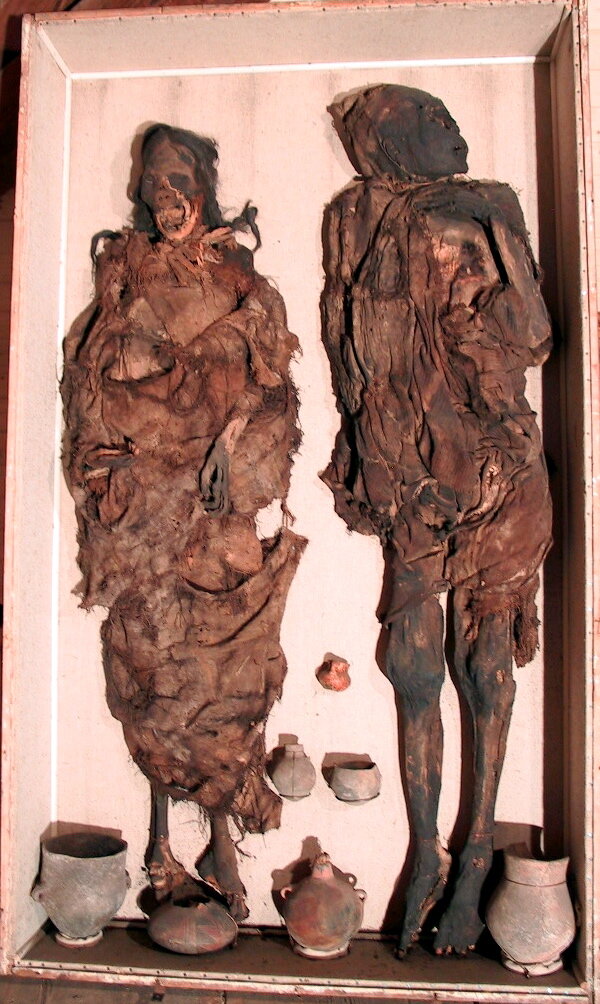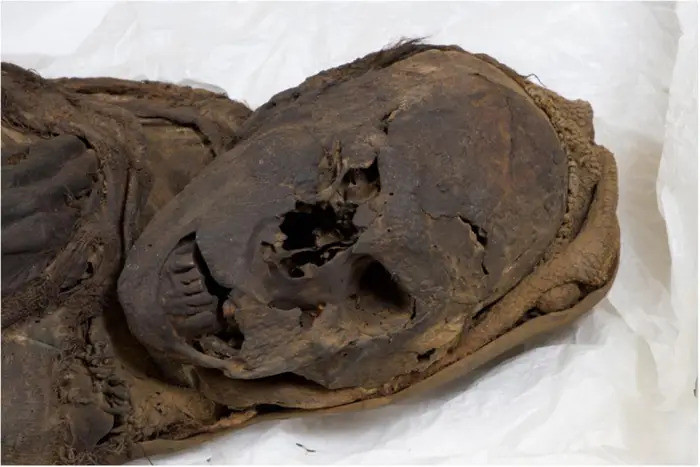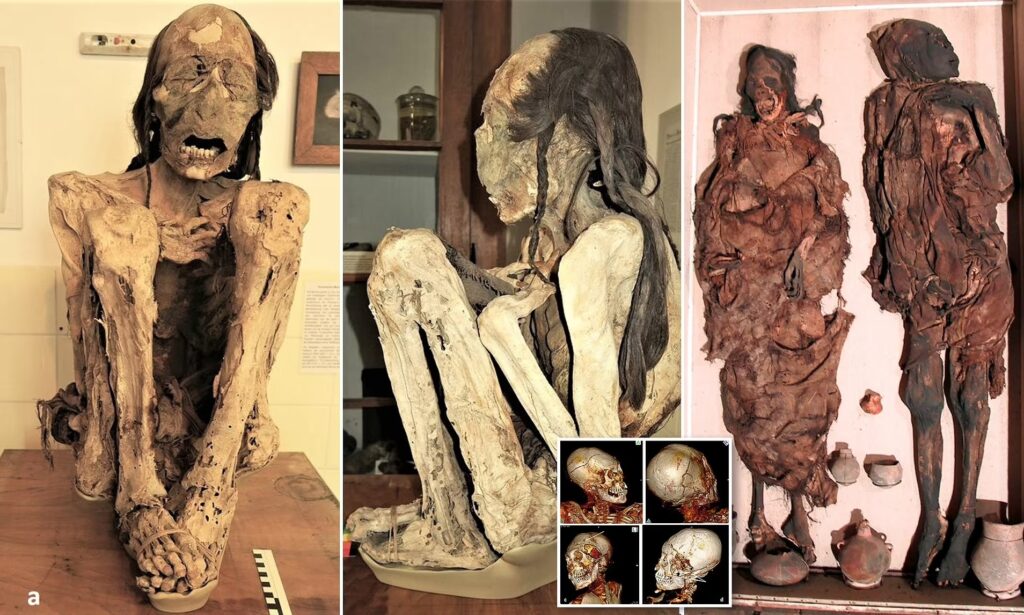In a groundbreaking study, researchers have meticulously examined the mummified remains of two South American men, shedding light on their brutal murders that occurred over 1,000 years ago. Through the use of advanced 3D computed tomography (3D CT) scans, scientists have uncovered compelling evidence that paints a grim picture of the prevalence of violence in prehistoric human societies.
The study, conducted by researchers from the Munich Clinic Bogenhausen, focused on three mummies – two males and one female – from the regions that are now Chile and Peru. The findings from this investigation provide invaluable insights into the harsh realities of life in ancient South America, challenging our preconceptions and expanding our understanding of the past.
The Marburg Mummy: A Young Man’s Violent End

One of the mummies, housed at the Museum Anatomicum in Marburg, Germany, belonged to the Arica culture, a fishing community in modern-day northern Chile. The young man, estimated to be between 20 and 25 years old at the time of his death, was buried in a squatting position, a common practice among pre-Columbian civilizations.
The 3D-CT analysis revealed a shocking truth about the young man’s demise. Researchers discovered that he had suffered a forceful blow to the head, followed by a fatal stabbing in the back while he was still standing or kneeling. Radiocarbon dating placed the assailant’s ambush between 996 and 1147 CE, shedding light on the violent nature of this ancient society.
Interestingly, the mummy’s skeletal features and well-preserved teeth suggested a diet rich in maize, a staple food of these civilizations. Additionally, evidence of severe tuberculosis scars was found in his lungs, underscoring the harsh living conditions and the prevalence of disease in this era.
The Delémont Mummies: A Tale of Intentional Violence

The second set of mummies, located at the Art and History Museum of Delémont in Switzerland, were likely from the Arequipa region in southwestern Peru. These individuals, a man and a woman, were buried lying face up, a departure from the customary burial practices in the South American highlands.
The male mummy’s aorta and large arteries showed signs of calcifying arteriosclerosis, a condition that can contribute to cardiovascular problems. However, the researchers determined that his cause of death was not natural, but rather the result of severe trauma to the cervical spine, likely inflicted intentionally.
In contrast, the female mummy exhibited skeletal damage postmortem, suggesting she died of natural causes. Radiocarbon dating indicated that the man died between 902 and 994 CE, while the woman passed away between 1224 and 1282 CE.
Unraveling the Mysteries of Ancient Violence

The findings from this study emphasize the importance of studying mummified soft tissue for a comprehensive understanding of past civilizations. The utilization of modern CT scans with 3D reconstructions allowed the researchers to detect diagnostic key features that would have otherwise gone unnoticed.
Dr. Andreas G Nerlich, the corresponding author of the study, highlighted the significance of these discoveries, stating that the research revealed a higher incidence of trauma, particularly intentional violence, than studies solely based on skeletal remains. This underscores the value of examining mummified remains, as they provide a more complete picture of the lived experiences and violent realities of ancient populations.
Unveiling the Secrets of the Past
Through the meticulous examination of mummified remains using cutting-edge technology, scientists have successfully solved an ancient cold case, unraveling the brutal murders of two South American men over 1,000 years ago. These findings shed light on the prevalence of violence in prehistoric human societies and highlight the importance of studying soft tissue preserved through mummification.
As we continue to uncover the secrets of our ancestors, each new discovery offers a glimpse into the mysteries of the past and enriches our understanding of human history. The stories these mummies have to tell serve as a powerful reminder of the resilience and the struggles of our forebears, and the valuable lessons we can learn from their experiences.

By delving into the past, we not only satisfy our curiosity about our origins but also gain a deeper appreciation for the complexities of the human condition. The insights gleaned from this study on ancient violence can inform our understanding of the roots of conflict and help us reflect on the progress we have made as a species, as well as the challenges we still face in creating a more peaceful world.
In conclusion, the groundbreaking research on these South American mummies has opened a window into the past, revealing the harsh realities of life in ancient societies. As we continue to explore the secrets of our ancestors, we can uncover the untold stories that shape our understanding of human history and the human experience.
